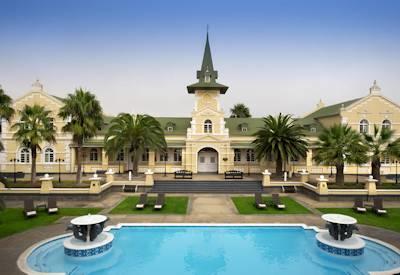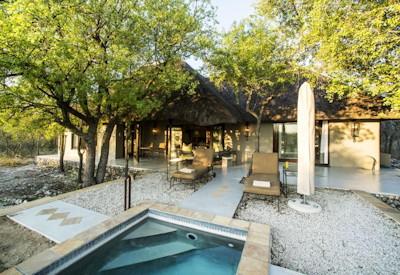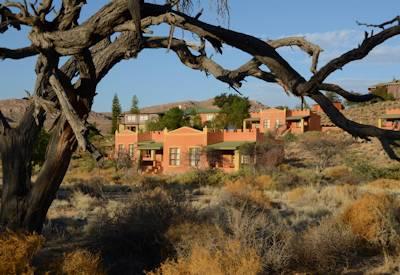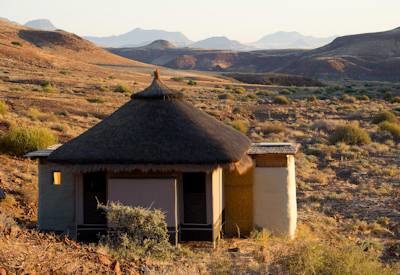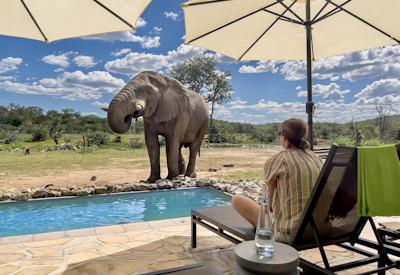In May 2012, we arranged for Uyaphi.Com client Ken Vine from Devon in England to stay with the traditional Himba people in two remote villages in the middle of Kaokoland, Namibia. He lived, slept, ate, conversed and photographed these Himba villagers. He produced a video documentary of his encounter and has given several lectures for charity about his stay with the Himba. In this Q & A interview, we ask Ken about his memories and his experiences.
Uyaphi: What motivated you to stay with the Himba?
KV: I suppose a fascination for people and cultures. Also, I was on holiday in Peru where I met up with a guy from South Africa who told me about the Himba. My interest spread from there and then I found your company on the internet who could arrange such a trip.
Uyaphi: Why did you choose the Himba above other traditional peoples?
KV: Purely by chance, before I met the guy from South Africa, I was interested in spending time with tribes’ people in the Amazon.
Uyaphi: Staying in the village, what were your first impressions?
KV: What a harsh and unforgiving environment to live in. The first Himba I saw were in the frontier town of Opuwo, basically, the last crossroads before the wilderness and they had sort of become westernized.
Uyaphi: Were you welcomed by the villagers or were they suspicious of you?
KV: The first two days they were certainly suspicious of why I was there and I had to sleep outside of the village but then my guide managed to persuade the chief that I was harmless. Then they accepted me with amused tolerance, and then after that, I joined in all of their daily activities. I must say, I never felt threatened and they were very friendly people.
Uyaphi: You slept in a tiny, cow dung rondavel. How was that like?
KV: Very strange sleeping on a cowhide mat. It was so small you couldn’t stand up in it. The lady who lived there cooked outside for me and lit the fire in the evening. The rondavel was much too hot for me in the day so I joined the Himba sitting in the shade. It was fine at night. (Editor’s note: May is approaching winter with hot days but very cold evenings in this arid, semi-desert landscape).
Uyaphi: The villagers seemed to be well-fed and generally happy from the video. Would you say that is a true reflection?
KV: Yes, I would. They are very happy people. They seemed to have plenty of cattle and goats. I think they had good rains earlier in the year. They ate lots of maize cobs and had melons (where they got them from, I don’t know). They were really lovely people. The Namibian government is trying to educate them and bring them more in line with modern society.
Uyaphi: Would you say that the Himba, as a traditional people, are thriving and what would you say are the major threats to their way of life?
KV: Their way of life will diminish more and more. I would be amazed that even in ten years’ time; life will be the same as I saw them. Whether that is a good thing or not, that is not for me to say.
Uyaphi: During the video, there is a clip about them enthusiastically receiving western medicine for their various ailments. Does this reflect disenchantment with their traditional medicines or just interest in trying out new things?
KV: I think they know that certain medicines give instant relief. The older people will be more resistant and stay with their traditional medicines. I was wary of giving them tablets as I didn’t know how it would affect them. The chief who I am sure was suffering from malaria, kept asking me for paracetamol which gave him some temporary relief from his pain. I am sure that traditional medicine will be maintained in some form in the future.
Uyaphi: On reflection, 12 months after your experience, what are your overriding memories?
KV: For me, I didn’t realize how poor they were but it was nice to see people who shared everything. They were not interested in the material world. It doesn’t mean anything to them. They didn’t want anything from me which was unusually nice. As long as they don’t get exploited, I would like to see them get better healthcare and education
Uyaphi: Ken, thank you very much for your time and we wish you good luck with your next adventure in 2014, staying with a remote Maasai people near the Masai Mara Reserve.
KV: Thank you. I am going to Antarctica later in the year and then I look forward to my next African trip.
Ken produced a video of his encounter entitled Living With The Himba and has given a lecture for the Children With Cancer charity of his time with the Himba. If you would like to receive a copy of the DVD, please contact Ken directly at post@vip-design.co.uk
Living With The Himba by Uyaphi.com
Swakopmund Hotel
In the heart of Swakopmund's vibrant city centre, the Swakopmund Hotel is a true gem, offering a perfect blend of historic charm and modern luxury. Built in and around the iconic old Station Building, this architectural masterpiece is as captivating as it is comfortable.
The hotel boasts exceptional facilities designed to cater to every need, whether you're here for business or leisure. The staff, ever-attentive and genuinely welcoming, go above and beyond to ensure every guest feels at home.
Ohorongo Safari Lodge
Nestled in the heart of Namibia's breathtaking Damaraland region, Ohorongo Safari Lodge offers an unparalleled escape into Africa's wild beauty. Surrounded by unspoiled landscapes, rolling hills, and diverse wildlife, the lodge is an oasis of luxury and adventure.
From elephant tracking to night-time stargazing under Namibia's clear skies, every moment is crafted to create memories that will last a lifetime. At Ohorongo Safari Lodge, each day brings a new opportunity to discover the magic of Damaraland.
Twyfelfontein Country Lodge
Set in the stunning landscapes of Damaraland, Twyfelfontein Country Lodge offers an unforgettable safari experience filled with Namibia's rich heritage and natural beauty. Surrounded by red granite formations and vast desert views, the lodge is your gateway to one of Africa's most scenic regions.
The lodge combines comfort with authenticity, blending seamlessly into its rugged surroundings. Guests can relax in well-appointed rooms that reflect the charm of the region, dine under star-studded skies, and enjoy warm hospitality that feels like home.
Villa Mushara
Nestled on the edge of Namibia's iconic Etosha National Park, Villa Mushara is a sanctuary of tranquillity and luxury. This exclusive retreat offers guests a unique blend of elegance and wilderness, where the untamed beauty of the African savannah meets the comforts of world-class accommodation.
Days at the villa are crafted to immerse you in the magic of the surrounding landscape. Wake up to golden sunrises and the distant sounds of wildlife before indulging in exceptional culinary delights and personalised service.
Kalahari Red Dunes Lodge
Nestled in Namibia's stunning Kalahari Desert, Kalahari Red Dunes Lodge offers an unforgettable safari experience. The lodge combines adventure and comfort, letting guests explore red sand dunes, golden savannahs, and vibrant wildlife.
Kalahari Red Dunes Lodge is the perfect base for exploring the Kalahari Desert. Enjoy guided game drives; nature walks, or peaceful sundowner excursions to see wildlife like springboks, oryx, and birds of prey up close.
Desert Horse Inn
Desert Horse Inn is a spectacular base for exploring the captivating southern Namib Desert. It offers the perfect gateway for a day trip to Lüderitz, the iconic ghost town of Kolmanskop, or the rare chance to spot the elusive desert horses.
Whether you choose to embark on thrilling mountain biking and walking excursions or simply soak in the serene beauty of this unique desert landscape, this destination promises an unforgettable experience. Discover an extraordinary side of the Namib that will leave you in awe.
Damaraland Camp
Damaraland Camp, nestled in the breathtaking Huab River Valley, is without a doubt one of the most stunning wilderness retreats in Namibia. Surrounded by endless vistas of stark plains, ancient valleys and the majestic peaks of the Brandberg Mountains.
Damaraland Camp provides exceptional opportunities to explore this remarkable region. Whether embarking on expertly guided game drives or setting out on walking safaris, every moment is designed to connect guests with the beauty and wildlife of the area.
Ongava Tented Camp
Ongava Tented Camp, located along the southern edge of Etosha National Park in the private Ongava Game Reserve, is a premier safari destination. Featuring a blend of stone, canvas, and thatch, the camp offers an intimate experience with accommodation for just 16 guests in elegant Meru-style tents.
The camp provides excellent game viewing and guided safari drives, immersing guests in the stunning wilderness of the reserve. Ongava is one of Etosha's top lodges, offering luxury, exclusivity, and unforgettable wildlife encounters for a remarkable safari experience.






